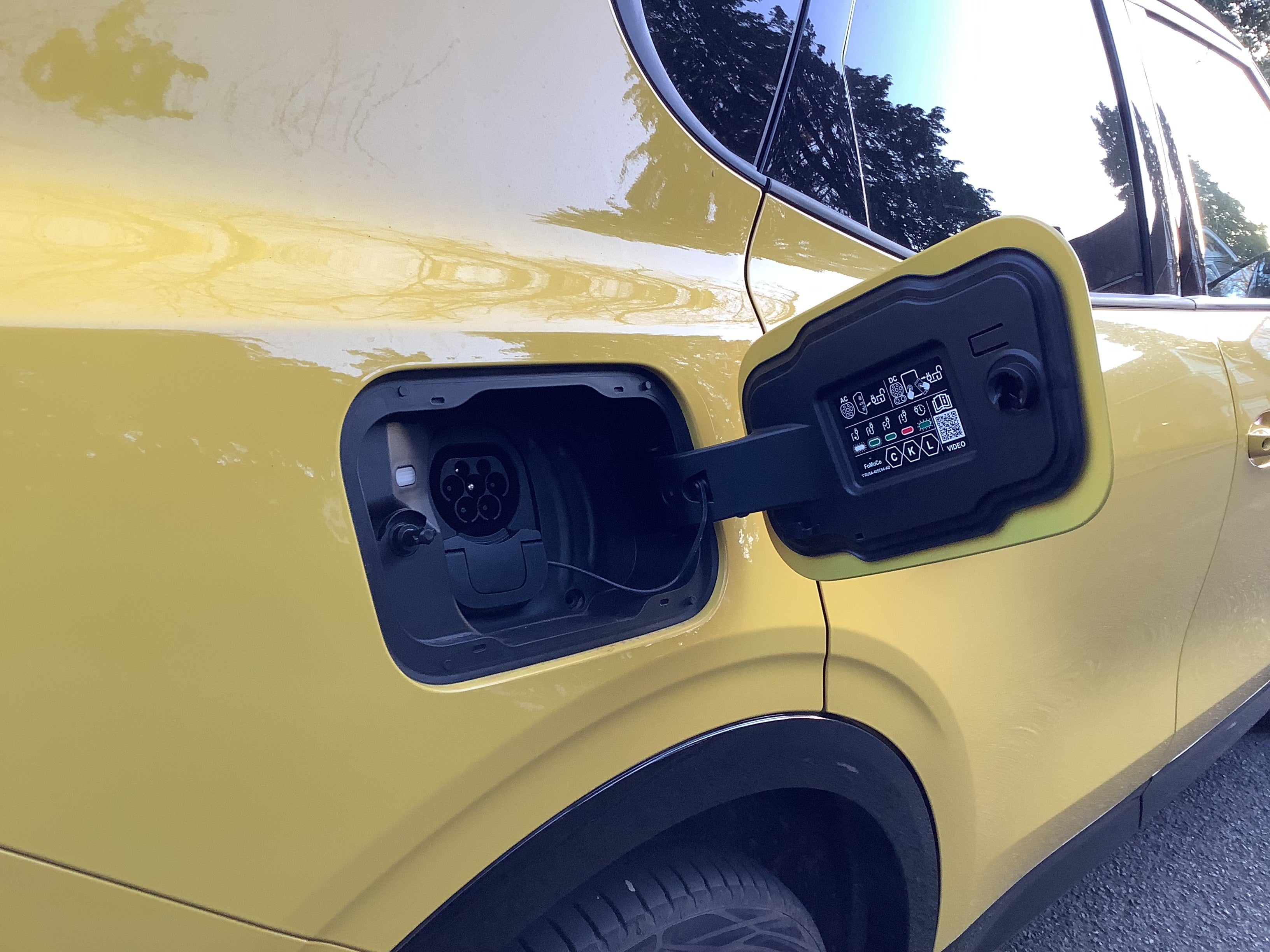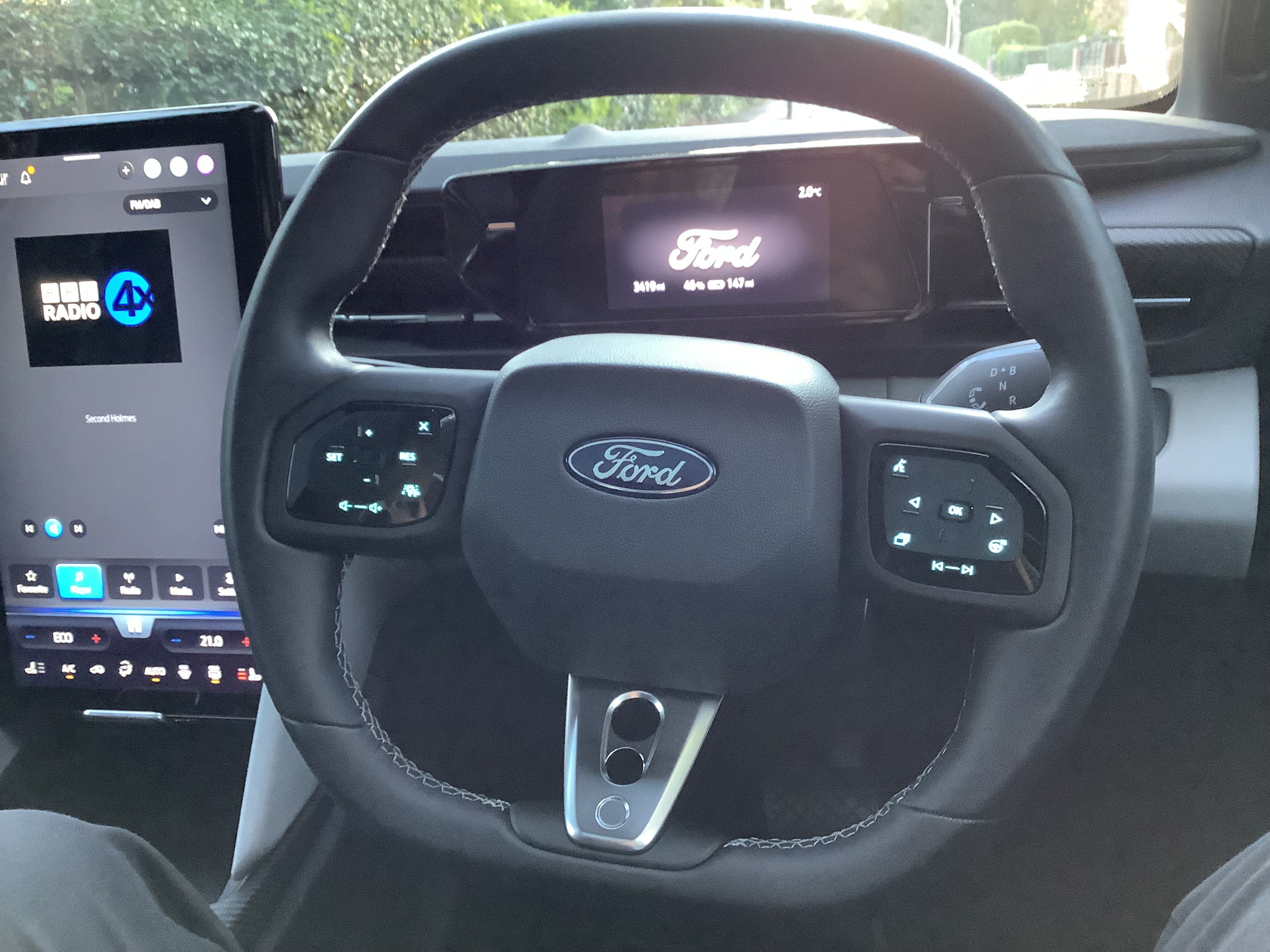The car you always promised yourself” was the memorably brilliant way the Ford Motor Company marketed the original Capri, a rakish looking coupe, when it first skidded onto our roads back in 1969. (There was actually an even earlier iteration, a short-lived “Consul Capri” model from 1961, but that’s by the by.)
I’m sure that the tagline could be quite appropriately attached to the new, radically different car; but I can’t help feeling that it’s not the car that Ford always promised themselves they’d be making in 2025.
First, the positives, and why the new-generation Capri is the car you should have promised yourself. If, that is, you had an open mind about what the future of motoring would bring – ie an all-battery electric vehicle that would drive better than any petrol-powered Capri from the previous model’s lifespan (1969-86).

My Capri Premium test car was equipped with all-wheel drive, which endowed this two-tonner with excellent roadholding, combined with an enviably soft ride, even when pressed hard. Like almost every electric car, it has enormous torque (679 Newton metres), which converts to impressive acceleration from rest, and all delivered without fuss, wheel spin or unintended sideways action.
The electric drivetrain is invariably smooth, and comfort and convenience are high. With the exception of some slightly oversensitive controls for the audio system, which you more or less get used to, there’s nothing to fault in the interior of a new Capri. The large Tesla-esque main touchscreen is adjustable for tilt, and the dinky dash display worked surprisingly well, especially with the optional “head-up” display.
Throughout my time with the Capri I was reminded of its place in popular culture – Minder, Del Boy, Bodie and Doyle, furry dice, chronic rust – and of the two people I knew who claimed to have made love in the Ford Capri back in the days when it was supposed to have magical powers of sexual magnetism, presumably emanating from the alternator. Perhaps, but their congress would have been immeasurably more relaxed in the spacious surroundings of the 2025 Capri, equipped as it is with heated seats – twelve-way powered on the driver’s side – and all-important rear privacy glass.

The best thing about the new Capri is the way it looks. Maybe with a knowing nod to the past, my car was finished in “Vivid Yellow” – an understatement, and practically the same as the “Daytona Yellow” they used to offer circa 1972, albeit these days without the almost obligatory black vinyl roof.
They’ve captured the side-profile look of the old model, which gives the new one the great added advantage of looking refreshingly distinctive in a world of samey jaggedy-looking SUVs and crossovers. At the front, the stylists have also reproduced the “lip” on the leading edge of the bonnet of the ’69 car. As a charming finishing touch, we also find the name CAPRI picked out front and rear in the “futuristic” typeface Ford used in the 1980s.
There’s not much innovation as such, but the nearly-square quartile steering wheel was a bit of a shock. There is also a black plastic shopping basket that fits into a bespoke space in the boot. I doubt it will ever get used.
So this is no old-school sports coupe, for sure, but it has fine performance (economy mode also selectable) and far better handling than the 1969 rear-drive Capri. There’s a lot of nostalgia about the old car, understandably, with memories of the meaty 2.8 and 3l six-cylinder jobs. Yet from personal experience I can attest that even though they went OK, the brakes on these beasts were only this side of safe.

It’s not so strange, that, when you realise that the Capri was actually based on the 1968 Ford Escort, and the base model was equipped with a 1300cc engine (52bhp at 5,000rpm, 89mph tops). As they said at the time, it couldn’t pull the skin off a rice pudding.
The negatives about the Capri are the reasons why Ford surely wouldn’t have dreamt they would be building such a thing. Partly because Ford has arrived so late to the electric car party, it’s using Volkswagen Group kit to base it on, so its controls and general demeanour would be familiar to VW ID.4 or Skoda Enyaq drivers. That’s mostly good – with a 200- to 300-mile range depending on battery options – but it has bequeathed the Ford those tricksy “haptic” fingertip controls.
I’d also wonder if the company that used to dominate the car market in the heyday of the old Capri, Cortina and Escort – 30 per cent market share of new sales – would now be satisfied with abandoning the mass market in favour of these rather pricey upmarket models. The new Capri may be once again the car you’ve always promised yourself, but sadly it is somewhat less financially accessible than its predecessor.
For making love, though…


